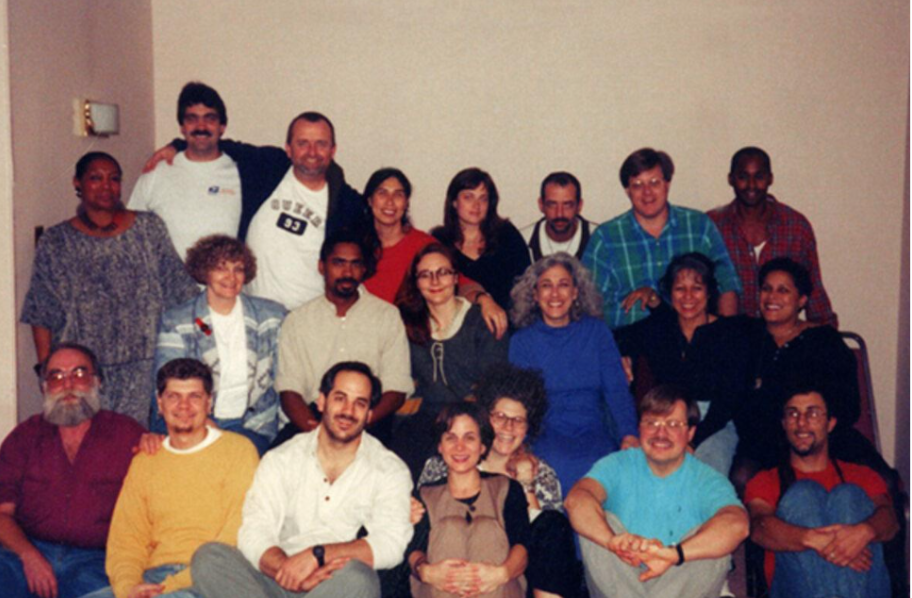National Harm Reduction Coalition (NHRC) is privileged to continue to spotlight Black harm reductionists who have made invaluable contributions to the Harm Reduction Movement and used their voices to advocate for the safety, dignity, health, and experiences of people who use drugs and communities impacted by drug use.
As part of Black History Month and beyond, NHRC proudly highlights the achievements and accomplishments of Dr. Lisa Moore, who sat for a brief interview with NHRC’s Director of Development & Business Strategy, Dr. Anthony Salandy, to discuss her somewhat accidental start in harm reduction and what she sees for the future of the movement. You can read Dr. Moore’s interview below:
Anthony: Please tell us a little about who you are.
Lisa: I am a lifelong resident of the San Francisco Bay Area and a half-life long harm reductionist. I began volunteering with Prevention Point, San Francisco, in 1989. I joined the Harm Reduction Working Group at its start which led to the creation of NHRC, then (known as the) Harm Reduction Coalition. My other professional work has been as a San Francisco State University professor. I created a university-level class in harm reduction in the early 1990s that I continue to teach to this day. Some remarkable harm reduction leaders have passed through my classrooms. Harm reduction has always been a source of community and practice, even when I have not explicitly been in harm reduction settings.
A: What was your journey to harm reduction?
L: I first got involved in needle exchange as a fluke. I wanted to do qualitative research in a “crack house,” but my professor said no. At that point in time, a bunch of my friends had started a needle exchange in San Francisco, more as an act of civil disobedience in hopes that the government would step in and fill the need. But this didn’t go as planned. They never stepped in. So, what we ended up with was a bunch of activists actually doing the work and creating the programs. I began volunteering and published an ethnography of needle exchanges in San Francisco.
HIV brought me to the movement. I was brought up in the East Bay Area and finished undergrad at UC Berkeley (University of California, Berkeley) in 1982. I was a young adult in the early (19)80s in the Bay Area. I was very involved in drug user and queer communities, so I ended up with a lot of dead friends. What we experienced—how much unaddressed trauma there is for people who lived through everyone around them dying. We were in the middle of a pandemic in a country that didn’t care about the people who were dying—a country that said the people who were dying deserved it. Then, the crack epidemic took off.

A: And how did the crack epidemic inform your work?
L: In grad school, I studied the sexual transmission of HIV. At that point, harm reduction wasn’t what I did. It was just a hobby. It fed my soul. East Oakland was being devastated by the crack epidemic. I felt good about being in harm reduction. The work was joyful. It actually felt like we were doing something in the midst of everything bad that was happening around us. The tsunami was flattening everyone, but in harm reduction we could actually do something to help and do it on a very human level. That’s what kept me going.
A: How did you see harm reduction change? Or has it stayed the same?
L: On a very basic level, harm reduction is about recognizing and supporting humanity. If that ever changes, it’s no longer harm reduction. Around it being normalized—that has definitely happened over the past 30 years. When I first started teaching harm reduction, I thought I was going to get run out of the university. Now, I’m teaching people who get it and are receptive. I often tell my students: You have no idea what we went through to get to this point. It’s progress! Harm reduction is now part of the lexicon. It’s not abnormal now to say: Let’s reduce harm.
I’m concerned about the consequences of the work becoming more bureaucratized and perpetuating the bureaucracy instead of the north star being the work. Then, the work becomes more distant. There’s always going to be tension. And there’s always going to be people who do this work for the paycheck. But it’s important to remember that this movement was started by a bunch of activists and no money. Now it’s moving into a stage of legitimacy. It has scaled up. There’s important policy work being done. Biden says the phrase “harm reduction.” But how do we stay accountable to the communities we serve?
A: Do you find that the community is asking for that sort of centering of its voice? How do we do that? How do we continue to center the voice of the marginalized?
L: Back in the (1980s) and (1990s,) HRC was an infant. Now, NHRC is a young adult. Expecting the adult to act like a child is ridiculous. We have to build on what the adult has to do, which is to foster and nurture the work of the grassroots organizations. This is the work that must happen.
